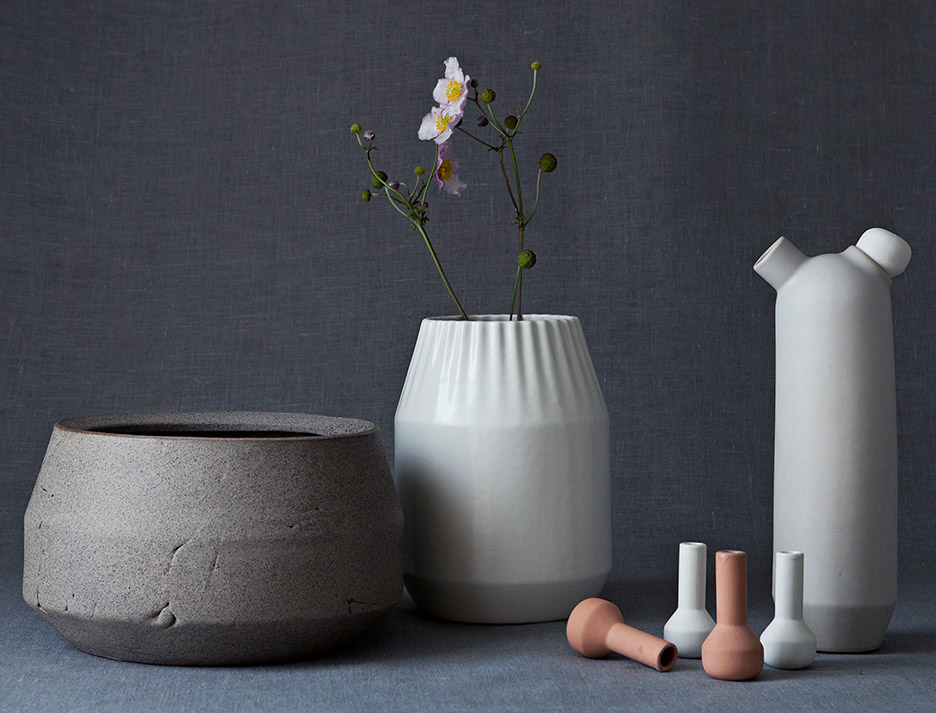Stoft recreates the stages of plant growth with Biophilia ceramic pots
Swedish design studio Stoft has created a range of organically shaped ceramic plant pots that can nestle inside one another (+ slideshow).

Each of the vessels in the four-piece Biophilia line represents a different stage in a plant's life – from seedpod to bloom – with the shapes taking reference from the forms of each.
"At a first glance the objects seem very ill-matched, perhaps like the seed before it blossoms or like a chestnut inside its shell, but at a closer view one can notice how the all have evolved from a common origin and form a unity," said Stoft.

The dark grey Capsula stoneware bowl resembles "the protective seedpod from which everything begins", while the white porcelain Petalis vase has a rippled neck to represent a plant about to blossom.

The shapes of branches are echoed in the oblong Truncus pitcher, which has two pipe-like openings at the top that can hold the tiny earthenware Spore vase – designed for seedlings.

Due to their decreasing width, each of the vessels can be stacked inside one another, creating multiple possible combinations.
French designers Ronan and Erwan Bouroullec's range of Cloud vases could similarly be nestled together, allowing individuals to create their own vase arrangements.

"Biophilia describes man's instinctive love and fascination for species, organisms and processes in nature," the studio said.

"The clay that for thousands of years has been shaped by nature has in this project formed new species. The collection symbolises how new production possibilities and collaboration models can be used to develop the handcrafted production and make it grow again."

The collection was made in partnership with Swedish ceramics manufacturer Zol Art, and was created for exhibition The New Map.

The show paired 24 designers with 24 manufacturers in Sweden, with a focus on demonstrating the possibilities of local production. The exhibition is on display at the Form/Design Center in Malmö until 15 November 2015.
Photography is by Ulrika Kestere.